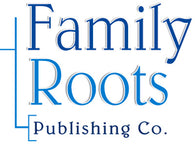
Finding Early Connecticut Vital Records: The Barbour Index and Beyond
Finding Early Connecticut Vital Records: The Barbour Index and Beyond; by Linda MacLachlin; 2019; 360 pp; 8.5x11; soft cover; ISBN:987-0-8063-5895-6; Item #: GPC8049
The Barbour Index to Connecticut vital records, created by Lucius B. Barbour, Connecticut Examiner of Public Records from 1922 to 1934, and housed at the Connecticut State Library, is the starting point for researching Connecticut birth, marriage, and death records prior to 1850. The 55-volume Barbour Collection of Connecticut Town Vital Records published, by the Genealogical Publishing Company from 1994-2002 and covering 137 Connecticut towns, is a reliable transcription of the original Barbour Index. These books are still available in paperback and electronic editions. The Barbour Index is not only the source of all these publications, but also includes six additional towns and abstractions of many private record compilations at the Connecticut State Library. Now - this volume details important genealogical records from all 149 Connecticut towns incorporated by 1850 - town by town, in alphabetical order.
If the Barbour Index is unquestionably the starting point for Connecticut research, we can now say with equal confidence that it must share the spotlight with a new publication: Linda MacLachlan’s Finding Early Connecticut Vital Records: The Barbour Index and Beyond. The product of a 10-year examination of Connecticut vital records, this identifies the original sources of the millions of early Connecticut vital records abstracted in the Barbour Index. It names hundreds of books, manuscripts, and articles not referenced by Barbour, and points the researcher to thousands of additional sources for early Connecticut births, deaths, and marriages. Finding Early Connecticut Vital Records is, in fact, a complete inventory of Connecticut vital records, and no collection can be complete without it.
PLEASE NOTE - this book is NOT where you will find your family names! It's a guide to the sources that contain those family names and vital record details
Finding Early Connecticut Records contains a town-by-town bibliography of both Barbour’s actual sources for the information in his Index and all vital records not in the Barbour Index that may be in church and cemetery records, town records, and published sources. For each town we are given the Family History Library (FHL) film numbers for derivative and original sources that have been microfilmed, and other source information for those that have not. These town chapters also note (in bold face) discrepancies and other town records that Barbour did not abstract.
Four sections at the back of the book list other sources for birth, marriage, and death information, such as church records, cemetery transcriptions (including those found in the famous Hale Collection), and available print sources, including secondary compilations of town vital statistics from multiple sources. Those sections are:
- Finding Early Connecticut Vital Records Online
- Appendix A: Typed Abstracts of Vital Information from Private Records
- Appendix B: Private and Vital Records Not Interfiled in the Barbour Index
- Appendix C: Private Records Shelved Above the Barbour Collection
As noted above, this new reference work also includes equivalent information for six other pre-1851 Connecticut towns that Barbour did not index: Cromwell, Easton, New Britain, New Fairfield, Seymour, and Trumbull. Many of the vital records substitutes cited in the work and not included by Barbour quote the applicable catalog description of the record’s contents. A final component of each chapter includes compilations of divorce records and Bible records, as well as compilations containing Connecticut vital records. A work as complex as this one would not be complete with a substantial Introduction explaining the history and nature of the Barbour Index and its limitations, and a detailed subject index.
